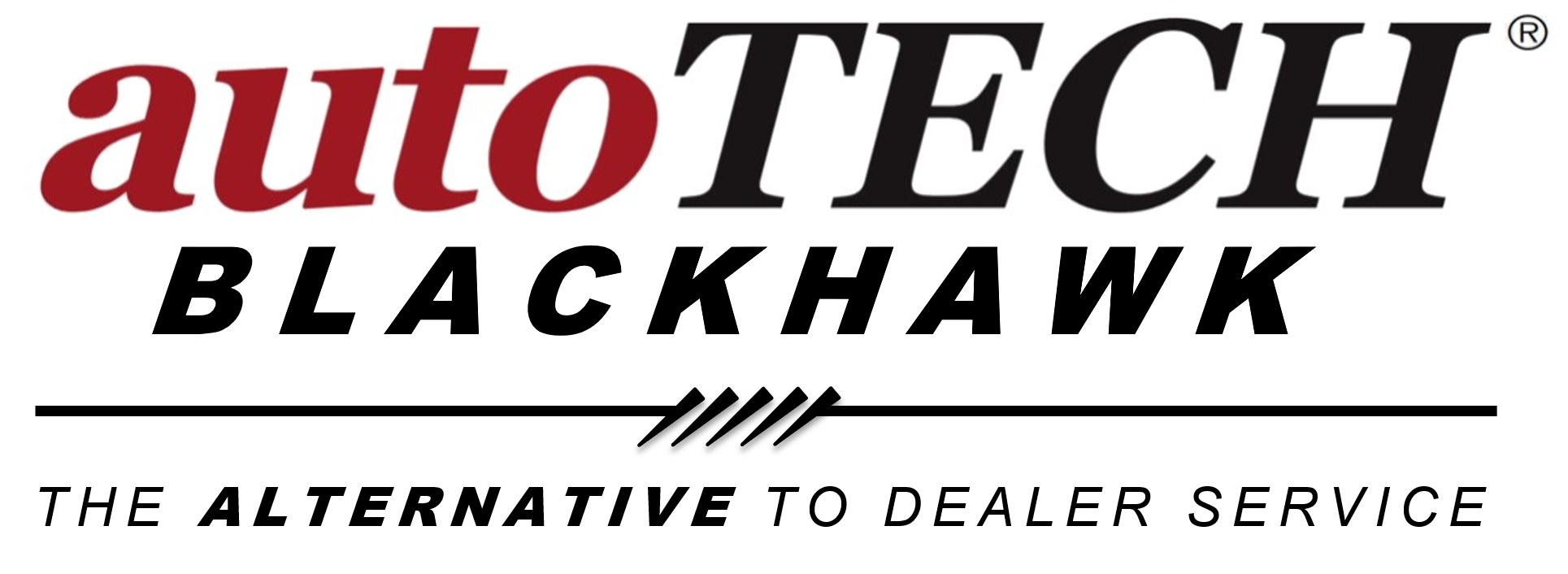Failing a smog test in California means your vehicle fails to meet the state’s emission requirements and can’t be registered. DMV will hold the car’s registration renewal until the issue is repaired and the car passes a retest. Motorists receive a printout indicating the failure cause, such as high emissions or exhaust leaks. Owners must repair the cited issues, and then come back for re-testing. If the vehicle continues to fail, you can apply for state help with repairs or for a waiver, but both have guidelines. These steps are good to know to avoid fees and late penalties. The following segment breaks down each post-smog failure step further.
Key Takeaways
- If you fail a smog test in California you get a registration block, legally have to fix your car, and could experience financial strain with the fines and repairs.
- Prompt repairs at authorized repair facilities and transparent records are necessary to rectify the situation and regain vehicle registration.
- By tackling the most common reasons for failure–including checking engine lights, bad catalytic converters or malfunctioning oxygen sensors–you can make your emissions performance last longer and avoid repeat problems.
- Financial assistance programs, repair cost waivers, and STAR-certified stations exist to help you combat the repair costs and navigate the regulatory process.
- Although this may seem like an obvious tip, keeping up with regular maintenance on your car will essentially prevent a lot of problems and help the vehicle run better for longer.
- The emotional and financial strain of that smog test failure can be tamed — with a little planning, some support from friends, and by taking advantage of consumer resources available to mitigate the pain of compliance.
Immediate Consequences of Failure
If you fail a smog test in California, it means your car’s emissions exceed the standards defined by state air quality regulations. This sets off a cascade of responses from a legal, financial, and operational perspective. The below sections describe each consequence.
Registration Block
A failed smog check holds your vehicle registration. The DMV won’t let you renew your registrations until your car passes emissions tests again. This hold prohibits the vehicle from being driven on public roads, which can interrupt daily life, work, or study commitments. Try driving a car with an expired registration and see what sort of fines you get if you’re pulled over. Extra fees to lift the registration block, compounding the financial hit.
Repair Mandate
They have to be repaired at a licensed smog check repair station. The mechanic will record all necessary repairs and outcomes in the vehicle inspection report. If you don’t fix these immediate repairs, you run the risk of additional law troubles and even more restrictions on your vehicle registration.
Post–repair verification is usually needed to be certain the vehicle is now air quality compliant. This is required to remove the registration hold and to secure legal authority to operate your car once more.
Financial Strain
Repair costs can be anything from minor fixes to major engine work, sometimes running into thousands of dollars. For cash-strapped individuals, these unexpected expenses can tax personal budgets.
A few owners might get state support or assistance programs that cover some repairs. Even with assistance, the cost can impact your wider budget, particularly if your vehicle breaks down again or your insurance rates increase.
Legal Ramifications
Driving without a smog certificate is illegal! Multiple offenses or disregarding repair orders could cause enforcement to get harsh, with steeper fines or even impoundment in extreme cases.
Local laws are unambiguous on this point. Failure to meet standards can result in fines, registration suspension, or legal action.
Resale Value Impact
A failed smog test drops your car’s resale worth. Buyers are leery of cars in need of emissions repairs and will steer clear of the purchase. Even if you discount the price, they have to factor in the cost to repair the car. One immediate consequence of failure is selling without a good smog certificate.
Your Action Plan After Failing
Fail a smog test in CA and your car’s emissions are beyond state limits and you can’t renew your registration until the issue is resolved. If for no other reason than to satisfy the standards and minimize the downtime, we must act quickly and with a plan grounded in practicality.
Understand Report
Begin by analyzing the smog test report. Create a checklist: highlight failed components, note the emission readings, and flag any warning messages. This allows you to identify what broke and triage fixes.
Note any DTC’s. These codes identify the fundamental problems—such as a defective oxygen sensor, deteriorated spark plugs, or problems with the catalytic converter. Frequently, the codes are a prime clue as to what’s awry.
Employ the report as your action plan. So, say the HC or NOx is high, you know where to hone in. If the report isn’t clear, take it to a good technician. They can assist in clarifying technical terms or ambiguous results, preventing you from erring.
Find a Mechanic
Find a certified smog mechanic. Don’t just choose the closest shop—investigate their expertise with emissions systems, look up their reviews online, inquire about their certification. A good shop can really help in solving complicated emission problems.
Take your smog report and talk it over with the mechanic. Have them describe how they are going to solve each problem. If you don’t have a regular shop, ask around for recommendations from friends or you can use state resources to find certified locations.
Get Repair Estimates
Get written quotes from a couple repair shops. Have each quote itemize all repairs necessary to bring your car up to code. That’s part and labor. Inquire about repair warranties—some shops provide guarantees on emissions repairs.
Schedule your day, some fixes can take a couple of days. Then, after repairs, retest at a certified smog station. If repair costs are excessive, see if you meet California’s financial assistance programs.
Common Reasons for a Failed Smog Check
This typically indicates underlying issues with a vehicle’s emissions or engine control systems. Regular upkeep, fast action on warning signals, and knowledge of changing emissions regulations are key to passing and performing. Here are the most common reasons for failure, and what you can do to fix them.
- Engine warning lights — particularly the check engine light — indicate emissions or systems issues. Bad sensors, old spark plugs, sticking calipers, and a clogged air or fuel filter are common offenders. High-mileage cars, cars with bad service histories, or outdated on-board computers are the most suspect. Routine spark plug replacement (every 48k), filter changes and system inspection will help get you through emissions.
- EVAP prevents fuel vapors from getting out into the air. Leaks or EVAP components – gas cap, purge valve, and the like – are a common culprit of test failure. They require immediate repairs and inspections to prevent extra pollution and trouble with the law. Gas cap defects and loose fittings are frequent and overlooked.
- Your catalytic converter is the key to keeping those nasty gases down. If it misses, emissions go through the roof, triggering warning lights and losing engine power. Replacement is expensive, but relying on certified parts alone is necessary to satisfy California regulations. High mileage and chronic engine issues tend to expedite converter wear.
- Worn or bad oxygen sensors throw off the air-fuel balance, resulting in extra emissions. If caught and replaced early, it can help your test results and prevent damage to your system. Existing problems can be a sign of something bigger going on in the emissions system.
Evaporative System
A defective EVAP system allows fuel vapors to leak. Check the gas cap for cracks or loose fit. Inspect purge valves and hoses for leaks. Get it fixed the moment you see a problem!
Oxygen Sensor
Three signs of trouble: poor fuel economy, rough idling, and failed emissions tests. Oxygen sensors contribute to maintaining the air-fuel mixture in balance. Replace immediately if defective. If troubles persist, have the entire emissions system inspected.
Navigating the Repair Process
If your car fails a smog test in California, you have to either repair the cause or cease driving the automobile. They’re rigorous because emissions checks must be performed by state law to aid in keeping air clean. Keeping track of repairs and inspections is essential, as you might need them for retests or applications for assistance. Good communication with your mechanic counts—transparent check-ins and a mutual strategy ensure everything gets repaired. Keeping up with repairs and ensuring your car passes emissions avoids additional hold-ups or fines.
|
Step |
Action |
Milestone |
|
Initial Failure |
Smog test failed, MIL light on |
Vehicle flagged for repair |
|
Diagnostic & Repairs |
Mechanic inspects, repairs emission system |
Complete repairs |
|
Record Keeping |
Collect invoices, test results, waiver paperwork |
Documents organized |
|
Retesting |
Vehicle retested at authorized facility |
Pass or further work needed |
|
Follow-up & Compliance |
Submit proof, apply for waivers if needed |
Registration/road use restored |
STAR Stations
STAR stations are under tight state supervision. These locations are authorized to conduct not only repairs but subsequent smog tests, streamlining the process and guaranteeing adherence. If your CEL is on, a STAR station can troubleshoot and fix problems that could cause you to fail. Certain stations provide additional services such as comprehensive emission diagnostics that can assist in identifying hard-to-solve issues. Visiting a STAR station is the surest way to ensure repairs are up to California standards and to prevent additional retests.
Repair Cost Waivers
California provides repair cost waivers for hardship. These are only for qualifying vehicle owners who can demonstrate that repairs are over a certain amount, and the car still breaks. Begin by verifying eligibility on the official state site—income caps and repair expenditures minimums are in effect. Collect repair bills, proof of income, and failed test results. There are hard deadlines for submitting these requests—missing one can result in fines or not being able to register your car.
Consumer Assistance Program
California CAP may assist with emissions repair costs. See if you qualify first—usually based on income, car age and failed inspections. If you are eligible, complete the applications shortly after your unsuccessful exam. Make a record of all your calls, emails and paperwork with the program — updates on time avoid delays. This initiative works to support owners in getting their cars back in the game while complying with emission standards.

The Emotional Toll of a Failed Test
A failed smog test in California can shake even a veteran vehicle owner. The emotional toll frequently goes well beyond the hassle of booking repairs or re-tests. Stress, anxiety, and financial uncertainty pervades, particularly for those who need their car for life or work. The guilt toward the planet might be heavy too, as some drivers fret over their car’s emissions affecting air quality.
The Initial Shock
There’s a certain shock associated with initially hearing that your car flunked its smog. This is a typical response, since the outcome can endanger schedules or professional commitments. Instead of responding in haste, like trying to sell the vehicle or booking the soonest expensive repair available, it’s best to stop and absorb the news. Taking a step back gives you time to check out the test results, research what might have caused it and collect solid information about next steps. In this way, vehicle owners can sidestep costly blunders and make decisions that fit both their finances and their values.
Financial Anxiety
Unexpected repair bills can be a real financial burden. The thought of paying for diagnostic checks, new parts and labor can induce panic, especially for those with tight budgets or other large expenses. For most, a basic budget is a useful starting point — it makes clear how much can be allocated toward repairs, without throwing other commitments off-balance. A few areas provide aid or financing that can alleviate short term financial stress. Keeping up with the potential expenses and typical fixes that accompany failed smog tests — and chatting with a reliable mechanic about what they might actually charge, before they do any work — prevents nasty surprises.
Navigating Uncertainty
Not knowing how long repairs will take or how much they will cost is deeply frustrating. This ambiguity can seem even more overwhelming to everyday car users who may have to scramble to find alternative transportation or take personal days at the office. Set up a flexible plan, one that leaves room for these surprises, and now you’re regaining control. Contacting friends, family, or local support networks can offer both emotional comfort and sometimes tangible help, like carpool options or recommendations for trusted repair facilities. You need to keep a good, patient heart. Others feel guilty about their car’s emissions — getting insight into pollutant output and how fixing things helps reduce it is comforting to know.
Proactive Vehicle Maintenance
Active care isn’t just about checking off a list—it’s a mindset that keeps motorists out of the shop and out of trouble, particularly when dealing with hurdles like CA’s smog test rules. Key maintenance tasks to prevent smog test failures include:
- Regular oil changes according to manufacturer recommendations
- Checking and maintaining proper tire pressure
- Inspecting and replacing air filters as needed
- Monitoring warning lights and unusual vehicle behavior
- Keeping detailed records of all maintenance and repairs
- Promptly addressing system alerts or performance issues
- Replacing worn parts before they fail
- Scheduling pre-test drives to assess vehicle readiness
Regular Oil Changes
Changing oil on schedule accomplishes more than just keeping the engine running smooth– Fresh oil minimizes friction, controls emissions, and keeps build-up from harming the engine. Sticking to the manufacturer interval—typically every 8-10,000 km but sometimes earlier for severe driving—keeps oil quality aligned with the engine’s requirements. Be sure to use oil that meets your owners manual specifications, as cheaper oils tend to break down faster and additional emissions to be created.
Test oil between changes, particularly if you detect leaks or your car burns oil. Fixing these little issues early can stop them from becoming big issues, lower emissions, and help prolong the life of your engine overall.
Tire Pressure
Driving with properly inflated tires facilitates both safety and emissions. Under-inflated tires put more strain on the engine — making it work harder, which burns more fuel and increases emissions. Use a dependable gauge and check monthly, dialing it to the figures in your owner’s manual or on the driver’s door sticker.
Rotating and aligning tires not only keeps wear even and your miles per gallon up, but can save you from stress on other parts of the car. They help ensure a smooth ride and reduced emissions in the long run.
Air Filter Checks
Clogged air filters deprive the engine of air, causing it to burn fuel less efficiently and emit more pollutants. Your air filter should be inspected at every service and replaced as soon as it appears dirty or at the manufacturer specified interval. Be proactive with this easy trick to maintain your engine clean and smooth running.
Pre-Test Drive
Prior to a smog check, a short drive heats up the engine, allowing sensors and emissions systems to operate as intended. Look for dashboard lights, strange noises, leaks. Make sure fluids and tire pressure are up to snuff. This simple pre-readiness check can catch issues prior to testing, saving time and anxiety.
Conclusion
It’s rough to fail a smog test in California, but it’s not the end of the line. A failure usually indicates obvious problems that expert hands can repair. For mechanics, they encounter these issues on a daily basis — like a fuzzy gas cap or a bad sensor. Repairing the source not only aids your car to run cleaner, but keeps you on the right side of the law. You save money, you avoid fines, and you help keep the air clean! Routine tune-ups are like gold. If you’re a failed test, get assistance, educate yourself, and keep your vehicle well maintained. Post your own story or advice to the group—your experience could put someone else back on the road.
Frequently Asked Questions
1. What should I do first if my car fails a smog test in California?
Check the test report for the part that failed. Then, fix your car and try again at a licensed station.
2. Can I drive my car after failing a smog check?
You can still drive it, but you can’t renew your registration until it passes the smog check and is to state specs.
3. How much time do I have to fix my car after a failed smog test?
California doesn’t have a hard deadline however you need to pass the smog check prior to your registration renewal date or you will get charged a penalty.
4. Will I have to pay for another smog test after repairs?
Yep, you gotta pay for a retest, unless your state or local program provides a free one–not often.
5. What are the most common reasons cars fail smog checks?
Typical causes are worn spark plugs, bad oxygen sensors, catalytic converters, and exhaust problems.
6. Are there financial assistance programs for smog repairs in California?
California provides help for low-income vehicle owners through its Consumer Assistance Program to aid in paying for repairs.
7. How can I avoid failing a future smog check?
Routine tune-ups, prompt repairs, and an eye on the engine light can help keep your car on the right side of future smog tests.
Need a Smog Check in California? Trust autoTECH Blackhawk for Expert Service
Experience the excellence of autoTECH Blackhawk when it comes to handling your California Smog Check. Why trust us with your inspection needs? Our standout feature is an unwavering dedication to building strong relationships with our clients, an essential part of keeping your vehicle compliant and running clean. This commitment shapes our tailored approach, ensuring every inspection aligns with your specific goals for performance, efficiency, and peace of mind on the road.
Whether your registration renewal requires a smog check, you’re concerned about emissions test results, or you simply want expert guidance on staying compliant with California standards, autoTECH Blackhawk is here to exceed your expectations. We proudly back our work with an industry-leading 3-year / 36,000-mile warranty on related repairs and use only high-quality, manufacturer-recommended parts when service is needed.
Don’t wait until a failed test disrupts your plans—contact our friendly team today to schedule a convenient, contactless smog check appointment!


